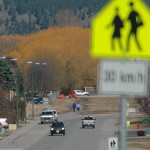Home »

I wonder if we will ever learn
In 1771 Joseph Priestley was experimenting with what could survive when placed in a vacuum. His first experiments were with a jar with the air pumped out.
He had tried mice and a candle and discovered they did not survive long. He decided to put a mint plant in the jar and much to his surprise it continued to grow and when he placed a candle in the jar with the mint it continued to burn. Quite by accident, this amateur scientist discovered that air was mainly oxygen and that plants produced the oxygen. The forests reduce the carbon dioxide in the air which is a natural way to combat global warming.
Priestley discovered that the key ingredient to life on our planet had its source in the process of photosynthesis. He did not know that this was the process; its discovery came later.[i] When Priestly shared his discovery with his friend Benjamin Franklin, Franklin commented that he hoped people would stop cutting down trees around their homes when they realized how important trees were to their very survival.
Sadly, Franklin’s suggestion was not heeded and today with a population of 10 times what it was in 1771 we continue to denude the landscape of trees, not only in the forest lands but around our homes. That doesn’t mean we should stop cutting trees, we have been managing our forest for centuries and if we don’t continue to manage our forests mother nature will do it for us with devastating forest fires as evidenced by the fires in Northern Alberta in 2016 and the fires in British Columbia this summer.
However, we need to replace what we harvest faster and with more trees, the emphasis must be on reforestation and forest enhancement, it is essential to our survival.
We know what devastation can be caused by denuding the landscape of all vegetation and we are aware that recovery may be all but impossible. Haiti is a good example. We also know the value of trees and forests, what we seem to lack is the motivation to change the way we approach this vital resource.
There are benefits of having trees in your yard. A tree represents a reduction in cooling costs of about $2,400 a year. We had a lot of large pine and fir in our yard up until 1995 when a devastating windstorm removed a significant number of them. Up until then we never concerned ourselves about the heat in the summer, our home would be cool all day practically all summer thanks to those trees.
The windstorm did two things, it removed a lot of vegetation and it also frightened people about what would happen the next time. The result is the removal of more trees. The result more wind, and hotter homes in the summer. We now own an air conditioner. In a few more years the trees we have planted to replace those lost will have reached maturity and we may no longer need AC but in the meantime, our home is nowhere near as comfortable in July and August as it was.
Now instead of reducing our energy consumption in the summer, we continue to use more to keep things cool.
Sadly, the impact of deforestation is not in isolation; it affects us in many ways. The earth is warmer as a result. Flooding occurs to some degree because of deforestation. The demand for energy increases we begin searching for ways to produce more electricity. Building dams can lead to even more devastating results as more water from runoff makes it difficult to contain, if one dam fails that could lead to more dams downstream failing, impacting the lives and environment of millions.
Using other alternative sources may be the answer. However, it is important to note that to build one wind turbine requires 200 tons of steel. The production of that 200 tons requires 220 tons of coal. A wind turbine will rust into the ground before it even comes close to returning the cost of construction. In the meantime, we have created an eyesore and a threat to wildlife and probably added to the problem with more carbon dioxide that we need trees to remove from the atmosphere.
Rather amazing isn’t it that what occurs on one side of the planet can affect so many people worldwide. I wonder if we will ever learn to treat our home planet with better care.
[i] Photosynthesis is the process by which plants using the energy of sunlight, convert carbon dioxide and water into carbohydrates and oxygen. As photosynthesis requires sunlight, this process only happens during the day. We often like to think of this as plants breathing in carbon dioxide and breathing out oxygen. That allows trees and plants to survive.
– Colin J. Campbell – CLU, Ch.F.C. is the managing partner of Guidance Planning Strategies Ltd, an independent wealth management firm serving businesses and families in the East Kootenay region of British Columbia. www.gpsbc.ca.








